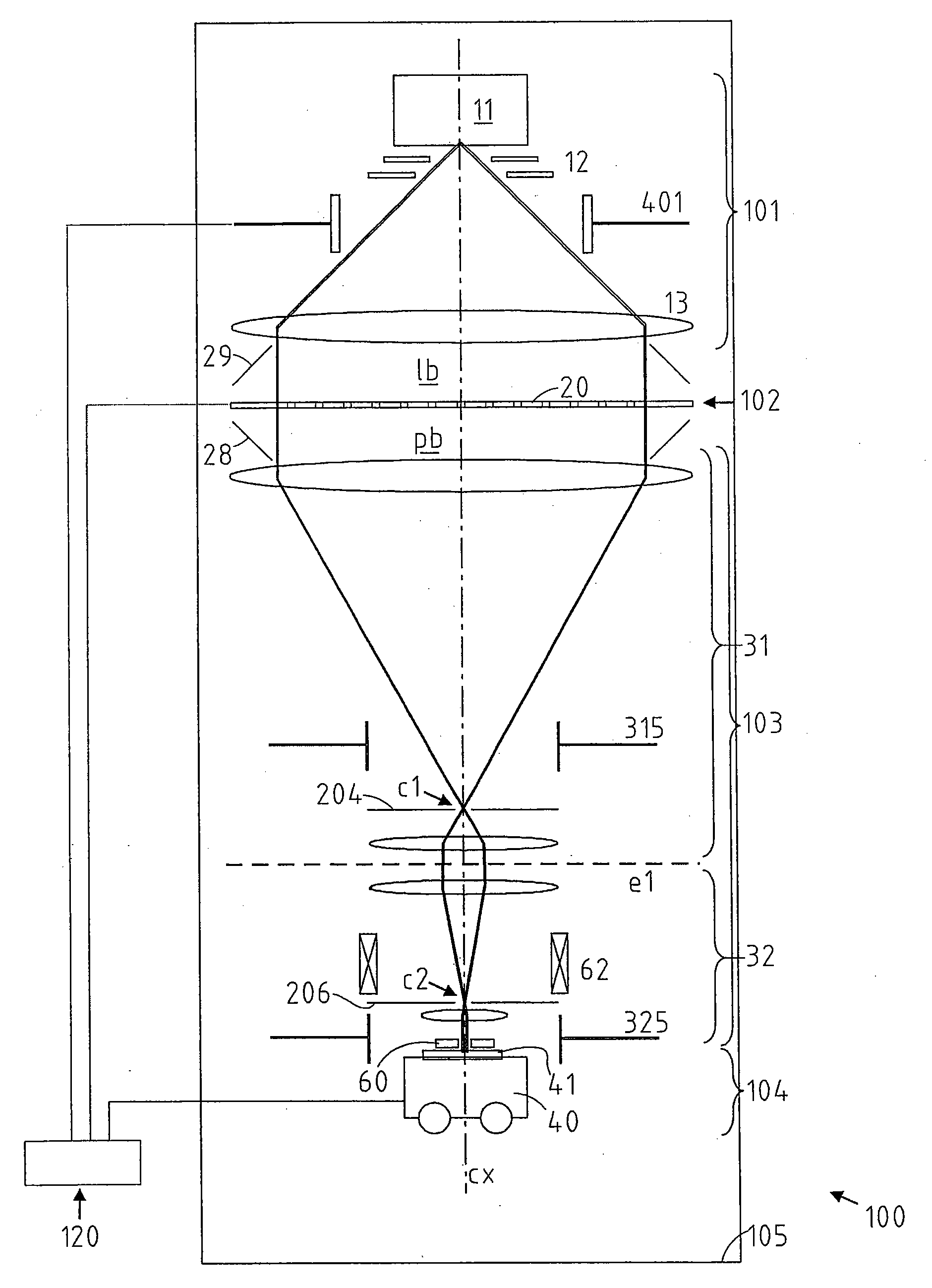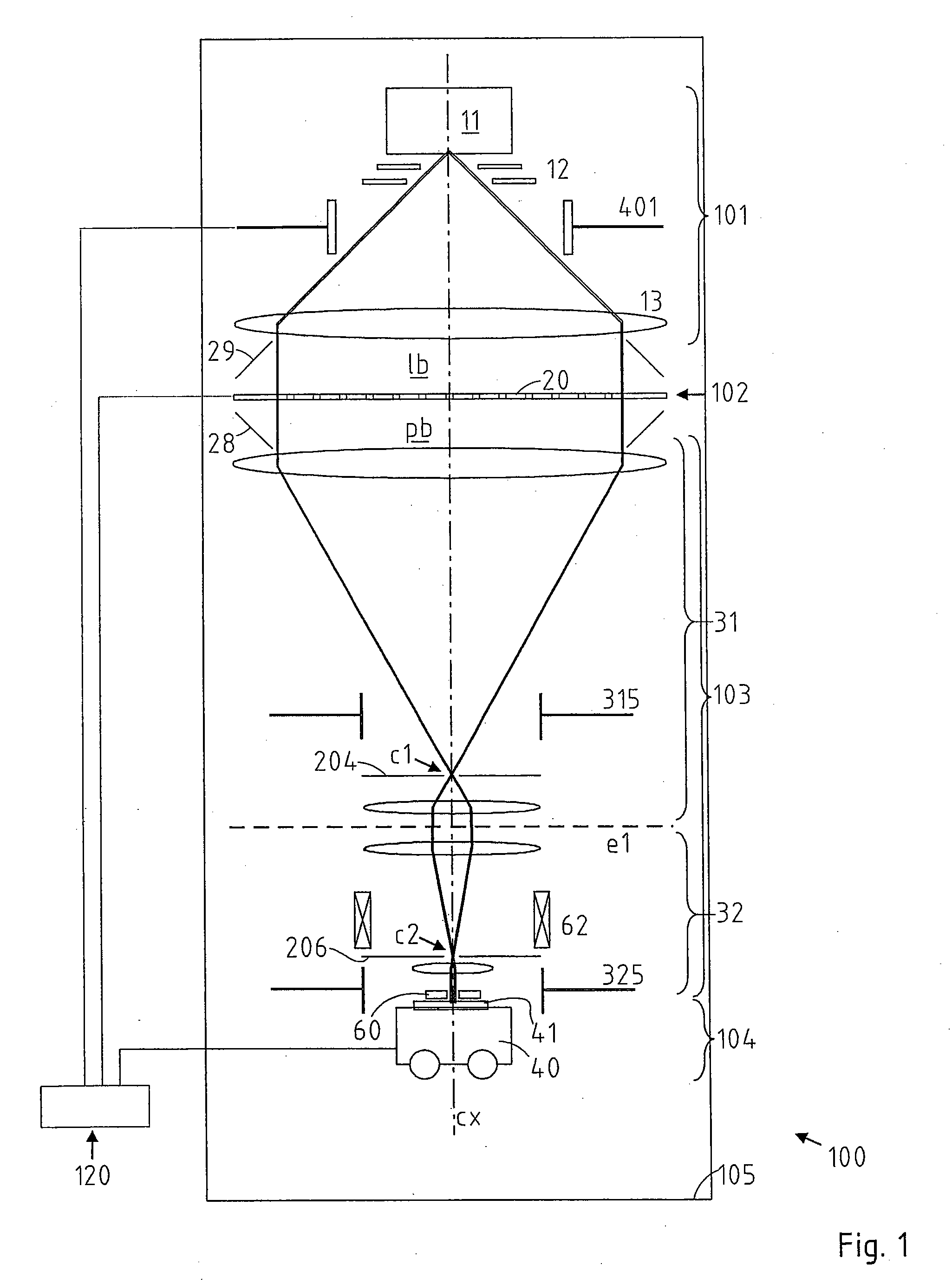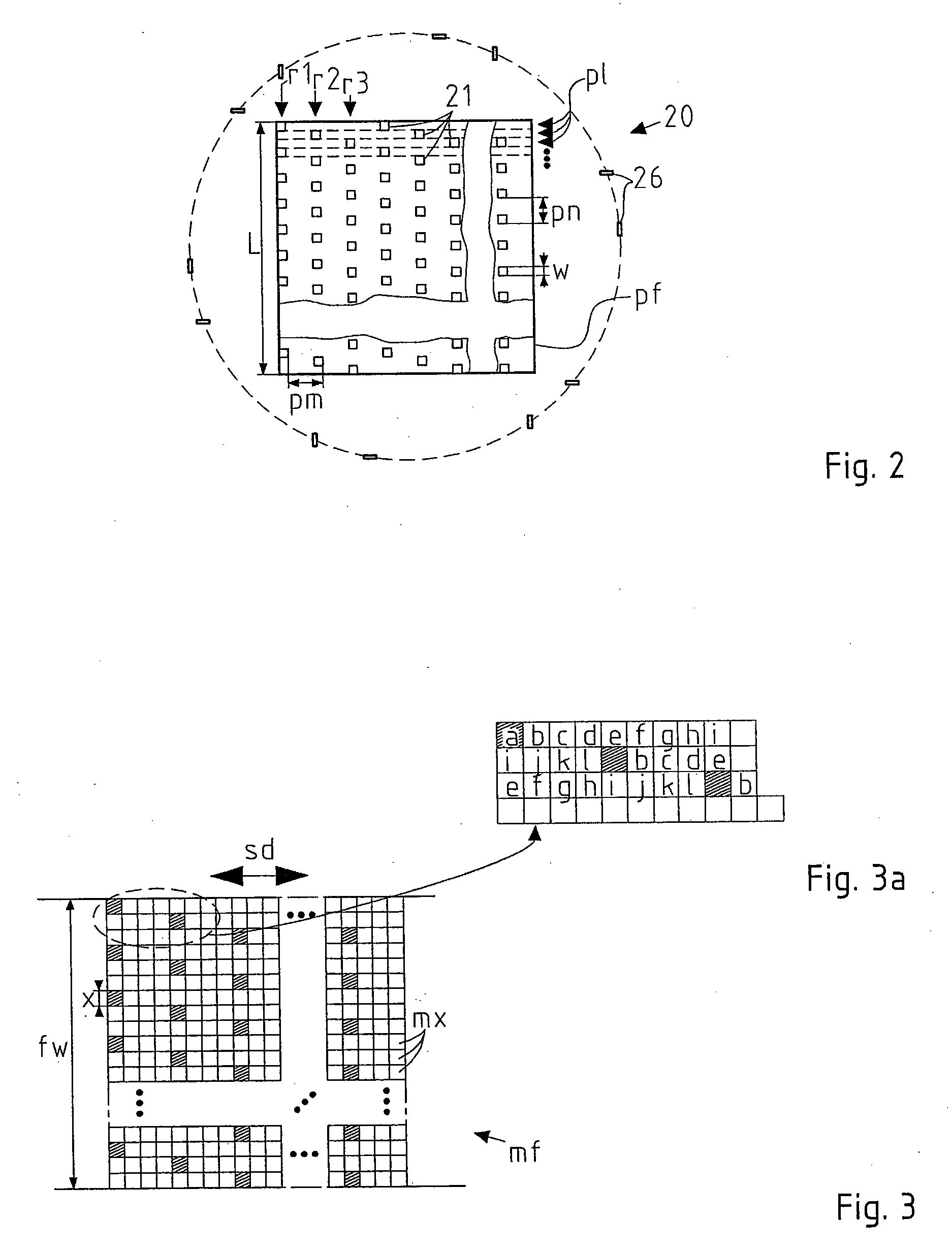Yasuda et al., U.S. Pat. No. 5,430,304, U.S. Pat. No. 5,359,202 and U.S. Pat. No. 5,260,579 use a similar BAA for exposing a substrate with a pattern, but the need to fed control lines to each of the blanking apertures makes the internal structuring very complex and prone to unwanted disturbing effects such as cross-talking and
transit time delays.
However, with the PLM2
layout, like with other prior art, the following main problems arise:Due to the global movement between beam and substrate, which is inherent to the PML2 or comparable prior art exposure strategy,
delay times with respect to switching of beamlets automatically lead to a virtual placement error of the beamlets, independent on the position of the respective aperture on the multi-aperture plate.
In any realization of PML2 it is very difficult to achieve the required timing precision of all beam-lets in the range Such a virtual placement error may appear in the image as an additional (non-isotropic) contribution to the blur, or as
distortion of parts of the pattern imaged to the substrate.Even if the timing of the switching is arranged to be “perfect”, it will be unavoidable that the
signal edges have finite slope, giving rise to, in particular, finite times of switching “on” and “off” during which the state of the electrostatic potential of the deflection electrodes (part of the pattern definition means) is not accurately defined.
In consideration of the increased
power consumption of the
CMOS electronics related to the switching speed (P=I2·R) and the limited
thermal conductivity of the
CMOS structure in the membrane-like multi-aperture plate, this requirement can be fulfilled only at low toggling rates which appear to be too small for realistic
throughput rates.Due to the data reloading process connected to switching of the beamlets electromagnetic disturbances may occur which may interfere with the beam passing the pattern definition device.
The smaller the
signal edge times, the higher is the disturbance due to reloading.Another problem occurring in PML2 or other prior art is that
gray level dose control is achieved primarily by
programming of the
data stream controlling the pattern definition device.
If
data preparation is done once before the exposure and no
dynamic control of the
total dose is possible as in prior art, such effects give rise to errors in
critical dimension and placement of the (lithographic) patterns.Another critical issue is the essential synchronization between stage position (or relative position of beam with respect to substrate) and the
signal timing in the pattern definition device.
A
delay of one with respect to the other will have the detrimental effect that the projected image of the pattern definition device is distorted along the scanning motion and misplaced with respect to the
layout design grid and previous
layers (
overlay error).
Particularly in the phases where the velocity of the
inert stage is not perfectly settled, e.g. near the turn around events, the synchronization requirement is critical.Another problem occurring in PML2 or other prior art is that due to the unique PML2 scanning stripe exposure strategy the
dose transferred to the substrate is proportional to the toggling rate.
The first would mean an unwanted dependency between
data preparation and the mechanical properties of the
scanner, the second would give rise to a significant
throughput reduction, depending on the achievable acceleration and jerk of the mechanical
scanner system.Another problem of PML2 or other prior art relates to thermal management.
In an arbitrary exposure typically 50% of the beamlets are blanked by the pattern definition device, giving rise to a persistent significant
heat transfer to the surface where the blanked-out beam parts are absorbed.
Therefore, with increasing beam current the absorbing surface will tend towards surface melting as consequence of local overheating.
 Login to View More
Login to View More  Login to View More
Login to View More 


